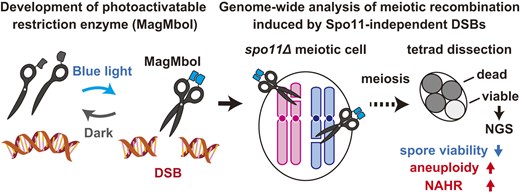2025-04-11 東京大学,科学技術振興機構
<関連情報>
- https://www.c.u-tokyo.ac.jp/info/news/topics/20250411000000.html
- https://www.cell.com/current-biology/fulltext/S0960-9822(25)00311-2
真菌の転写因子が有益な根のエンドファイトを炭疽病葉の病原菌に変える A fungal transcription factor converts a beneficial root endophyte into an anthracnose leaf pathogen
Ren Ujimatsu∙ Junya Takino∙ Seishiro Aoki∙ … ∙ Hiromi Haba∙ Atsushi Minami∙ Kei Hiruma
Current Biology Published:April 10, 2025
DOI:https://doi.org/10.1016/j.cub.2025.03.026
Graphical abstract

Highlights
- Overexpression of CtBOT6 transcription factor turns a beneficial fungus to a pathogen
- CtBOT6 regulates the secondary metabolism cluster ABA-BOT in the root fungus
- The ABA-BOT cluster is required for CtBOT6-induced fungal virulence
- CtBOT6 activation in the fungus triggers necrotrophic interactions with A. thaliana
Summary
Plant-associated fungi exhibit diverse lifestyles. Fungal endophytes are resident inside plant tissue without showing any disease symptoms for at least a part of their life cycle, and some of them benefit plant growth and health. However, some can cause diseases in specific host environments or genotypes, implying a virulence mechanism, which may be induced by as-yet-unidentified regulatory factors in fungal endophytes. Here, we show that CtBOT6, a transcription factor encoded within a secondary metabolite gene cluster known as the abscisic acid (ABA)-botrydial gene (ABA-BOT) cluster in the root-associated fungus Colletotrichum tofieldiae, triggers virulence-related gene expression and drives the production of diverse metabolites encoded both within and outside the cluster. CtBOT6 overexpression is sufficient to shift a root-beneficial C. tofieldiae to a leaf pathogen, driving its transition along the mutualist-pathogen continuum. Our genetic analysis revealed that the ABA-BOT cluster is indispensable for fungal virulence caused by CtBOT6 activation, implying that compounds derived from the cluster affect these processes. Furthermore, transcriptome analysis of root colonization by C.tofieldiae strains overexpressing CtBOT6 revealed that the pathogenic state induced plant defense and senescence responses characteristic of necrotrophic interactions. Importantly, this state enabled the fungus to proliferate and reproduce in leaves, in addition to heavily colonizing roots, with these processes being partly dependent on the host ABA and ethylene pathways. Our findings indicate that the expression status of CtBOT6 serves as a critical determinant for the endophytic fungus to adapt to the different plant tissues and to manifest diverse infection strategies.


